The
world’s grasslands flourish in the middle latitudes of our planet, quite far
north and south of the equator; hence, this biome is subjected to pronounced
seasonal changes in environmental factors. Grasslands also tend to thrive in
the drier interior of continents some distance from the oceans.
Grasslands
generally receive moderate, often erratic rainfall, usually in late spring to
early summer; the short wet season is followed by prolonged dry periods during
which very little precipitation falls. Temperatures in grasslands can fluctuate
annually from hot daytimes to very cold winters with significant bouts of frost
(at least). Moreover, most grasslands occur on deep soils (often sandy or friable)
that do not retain soil moisture for long.
The
grasslands survive pronounced seasonal changes in a combination of environmental
factors: sufficient warmth and sufficiently long day-lengths for growth, moist
upper layers of soil, and frost-free nights in the summer months, with cold and
frosty nights, dry soils, and short day-lengths in winter. This combination of
factors gives rise to an obvious growing season for the vegetation in late
spring and summer, followed by a lengthy dormant season.
In
southern Africa, the grasslands are located chiefly in South Africa (on the Highveld (an elevated central plateau)
and the inland areas of KwaZulu-Natal and the Eastern Cape) with much smaller,
localised regions found particularly in the eastern highlands of Zimbabwe. In
general, the topography is flat or undulating, but it includes the escarpment areas
of the Highveld and the highlands of
Zimbabwe too. The altitude of southern Africa’s grasslands varies from near sea
level to close to 3000 metres in elevation.
A
copious number of grass species dominates the grasslands extensively. Between
the grasses also grow many non-woody flowering plants and many geophytes
(bulb-producing plants); regularly woody shrublets can also survive the
environmental and climatic conditions experienced in grasslands. Since the
height of the vegetation is very low, plants in grasslands experience high
light intensities (at least during the summer months); no true shade-plants
survive here.
Taller
shrubs and trees are generally absent from grasslands. There are several
reasons for this absence. The deep and often well-drained soils of grasslands
frequently become too dry at deeper levels for tree roots to be able to absorb
sufficient moisture. In general, the leaves and smaller twigs of trees and
shrubs are also not frost resistant; therefore, taller woody vegetation can not
survive the lengthy cold, dry winter seasons. During the winters, fire too
becomes a significant ecological factor in grasslands, removing dense old growth
from the biome, making nutrients available again for the rapid growth of new
grasses during the following growing season. Fire also prevents the
encroachment of shrubs and trees into grassland areas.
In
contrast to most woody vegetation, grasses can survive the challenging
conditions of the dry seasons during which grasses become dormant. In winter, the
grasses usually die back; that is, the above-ground culms dry out completely
while the below-ground root systems survive the harshest of parched cycles. Alternatively,
many grasses are annual plants rather than perennials – the adult lives for one
season only, during which time the plant germinates from seed, grows rapidly,
flowers and sets seed itself, only to die when the dry season commences. As
long as the upper soil layer does not become too hot during a fire, the seeds
of the previous summer can survive there and the grasslands can persist even through
regular cycles of wildfires. The
smaller non-woody herbs, flowering plants and the shrubs of the grasslands
follow similar strategies.
Grasses
form a special subset of the vegetable world in many ways. Their roots do not
penetrate deep into the soil; rather, the many thin, fibrous roots spread out
just under the soil surface, knitting together the top layer of soil. The
decomposition of the dead leaves, culms and roots of grasses releases nutrients
into the topmost, enmeshed and very fertile soil layer. The web of fibrous
roots also captures much soil water before it percolates into the deeper strata
following good rains. Sacrificing a long life for rapid growth, grasses with
their strap-like leaves and thin culms have done away with thick trunks and
large leaves. The strategy employed is one of grow, reproduce and set seed as
rapidly as possible. In grasslands, plants that do not produce seeds are very
rare.
Although
they are flowering plants, grasses have done away with large, showy flowers.
The grasslands, in general, are often too dry for much of the year to support a
permanent, large insect population. There exist vast numbers of insects in
grasslands, but their appearance in a local area may be unpredictable.
Therefore, attracting a pollinator at the correct time – when the flowers have
grown and matured, and are ready for pollination and fertilization – is a
challenge for any flowering plant in a grassland environment. Instead, grasses
have reverted to wind pollination and the flowers have become minute, but
bright, splashes of colour in the inflorescences of grasses. Since most grasses
grow to a more or less uniform height and the grass stalks are thin, wind can
move over and through grasslands relatively unimpeded, except at ground level.
Thus wind pollination is an effective strategy for plant reproduction in this
environment.
In
contrast to all other plants, the grasses possess a unique feature. In plants
that are not grasses, cell division for growth of the organism takes place only
in two regions of the plant: at the tips of the roots and twigs (where
elongation of all plants takes place), and in woody plants just below the outer
covering inside of the bark of larger shrubs and trees (so that an increase in
the diameter of roots, trunks and branches can take place). In grasses,
however, patches of undifferentiated tissues (the intercalary meristems) occur
and cell division can take place at any regular point along the plant. As a
consequence, grasses do not stop growing when their leaves and culms are grazed
(that is, when the tips of the plants are removed); rather, growth of new plant
material will take place from the intercalary meristems. In fact, grasses tend
to thrive better if they are grazed to a certain extent. The saliva of the
antelopes that graze the grasslands of Africa and elsewhere also stimulates
grass growth, an interesting example of co-evolution between a predator and its
prey in these two groups that evolved on our planet at the same time.
When
people look at grasslands, they may conclude that the biodiversity of this
biome is quite low. Grasslands look uniform – there seem to be only grasses
present, and these tend to grow to the same length (more or less) in any
particular area. However, in South Africa, this biome harbours a tremendously high
biodiversity (second only to the fynbos biome of the southern Cape). The
grasslands are often home to rare plants, particularly so in the higher-lying areas
along the escarpment. These scarce species are often endangered; they comprise
mainly endemic geophytes (bulb-producing plants) and dicotyledonous herbaceous
plants. However, very few species of grasses are rare or endangered, almost
certainly as a result of wind pollination and the production of small seeds.
All
my life I have been a resident of the Highveld
of South Africa. My earliest recollections of wilderness are intertwined
intimately with the grasslands. As a very young photographer, I often lamented
the fact that my family had not lived in a bushveld or coastal area –
environments that seemed so much more photogenic in themselves and that
appeared to be jam-packed with opportunities of capturing images of wildlife. However,
the more I explored, the closer I looked at the grasslands surrounding my home,
the more grew my appreciation of the spectacular expanses of the grasslands.
Nowadays, I relish the challenge of portraying the grasslands in all their
splendour; I cherish every opportunity of arresting, in an image, the fabulous grass
menagerie.

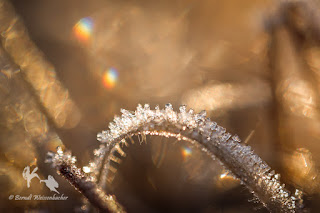
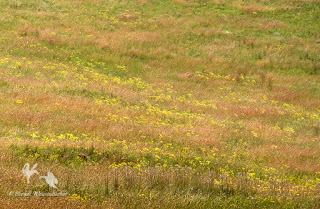
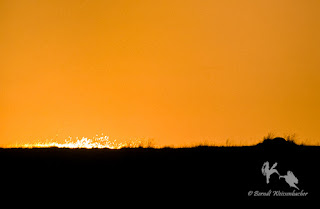
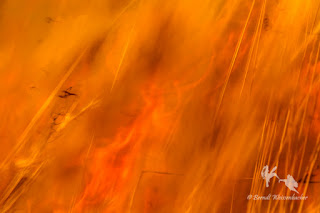
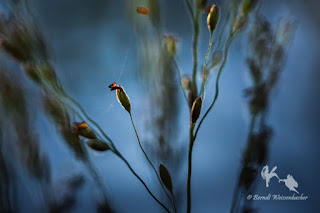
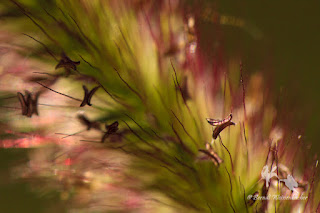

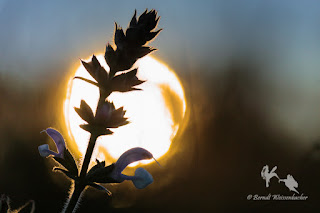


No comments:
Post a Comment